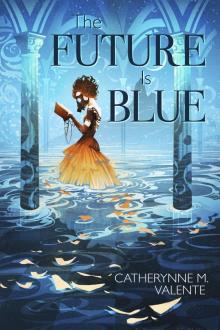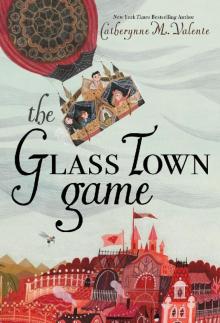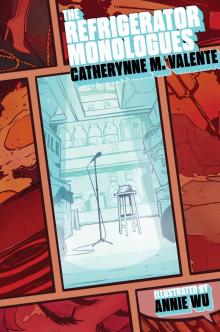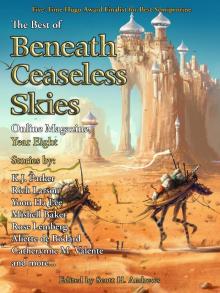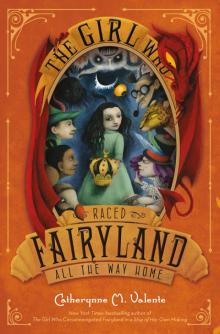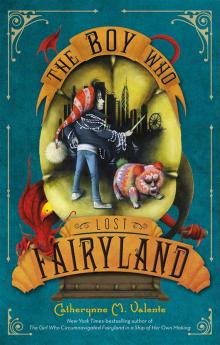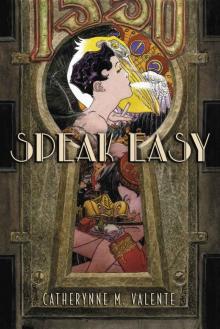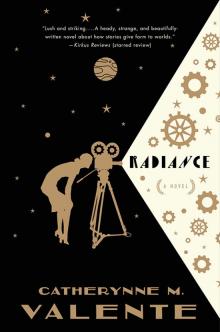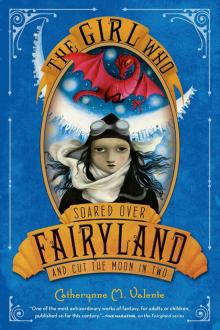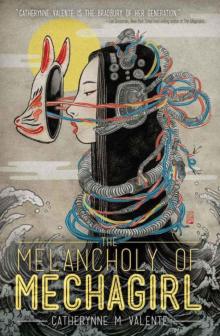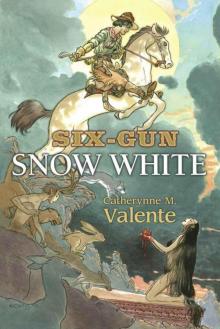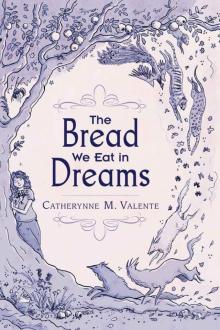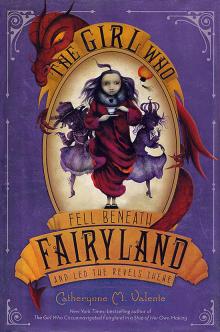


The House of Kennedy
James Patterson

Copyright © 2020 by James Patterson
Hachette Book Group supports the right to free expression and the value of copyright. The purpose of copyright is to encourage writers and artists to produce creative works that enrich our culture.
The scanning, uploading, and distribution of this book without permission is a theft of the author’s intellectual property. If you would like permission to use material from the book (other than for review purposes), please contact [email protected]. Thank you for your support of the author’s rights.
Little, Brown and Company
Hachette Book Group
1290 Avenue of the Americas, New York, NY 10104
littlebrown.com
Facebook.com/littlebrownandcompany
twitter.com/littlebrown
First edition: April 2020
Little, Brown and Company is a division of Hachette Book Group, Inc. The Little, Brown name and logo are trademarks of Hachette Book Group, Inc.
The publisher is not responsible for websites (or their content) that are not owned by the publisher.
The Hachette Speakers Bureau provides a wide range of authors for speaking events. To find out more, go to hachettespeakersbureau.com or call (866) 376-6591.
Part Title photographs courtesy of the following: One—Morgan Collection/Getty Images; Two—Imagno/Getty Images; Three—Bettmann Archive//Getty Images (both images); Four—Walter Sanders/The LIFE Picture Collection via Getty Images; Five—Bill Eppridge/The LIFE Picture Collection via Getty Images; Six—Ron Galella, Ltd./Ron Galella Collection via Getty Images; Seven—Everett/Shutterstock; Eight—Ron Galella/Ron Galella Collection via Getty Images.
ISBN 978-0-316-49488-5
E3-20200306-DA-NF-ORI
Contents
Cover
Title Page
Copyright
AdCard
PROLOGUE
PART ONE: The Patriarch Chapter 1
Chapter 2
Chapter 3
Chapter 4
PART TWO: The Two Roses Chapter 5
Chapter 6
PART THREE: The Favorites Chapter 7
Chapter 8
Chapter 9
PART FOUR: The President Chapter 10
Chapter 11
Chapter 12
Chapter 13
Chapter 14
Chapter 15
Chapter 16
Chapter 17
Chapter 18
Chapter 19
Chapter 20
Chapter 21
Chapter 22
PART FIVE: The Prophet Chapter 23
Chapter 24
Chapter 25
Chapter 26
Chapter 27
Chapter 28
Chapter 29
Chapter 30
Chapter 31
Chapter 32
Chapter 33
Chapter 34
PART SIX: The Senator Chapter 35
Chapter 36
Chapter 37
Chapter 38
Chapter 39
Chapter 40
Chapter 41
Chapter 42
PART SEVEN: The Next Generations Chapter 43
Chapter 44
Chapter 45
Chapter 46
Chapter 47
Chapter 48
Chapter 49
Chapter 50
Chapter 51
Chapter 52
PART EIGHT: The Prince Chapter 53
Chapter 54
Chapter 55
Chapter 56
Chapter 57
CODA
Discover More James Patterson!
Photos
Notes
ABOUT THE AUTHOR
What’s coming next from James Patterson?
Get on the list to find out about coming titles, deals, contests, appearances, and more!
The official James Patterson newsletter.
For a preview of upcoming books and information about the author, visit JamesPatterson.com or find him on Facebook, Twitter, or Instagram.
PROLOGUE
The frail old man wakes screaming, tangled in an American flag—the same one that draped the coffin of his slain son, President John Fitzgerald Kennedy, three days after his November 22, 1963, assassination.
Joseph Kennedy Sr., the seventy-five-year-old patriarch of the Kennedy dynasty, who once could sway prime ministers and presidents with his Irish charm, is suffering the lingering effects of a stroke, unable to communicate beyond moaning the words “yaaa” and “nooo.” Trapped inside his nearly paralyzed body, he struggles to pull himself free from the flag.
The flag had sheathed the president’s casket, borne by horse-drawn caisson to Arlington National Cemetery two days earlier. After the army bugler sounded taps, the military honor guard watching over the gravesite folded the flag thirteen times to form a triangle showing only a field of blue stars, as customary, then presented it to Jacqueline Bouvier Kennedy, the president’s stoic widow.
And Jackie wants her beloved father-in-law to have it. The man she calls “Grandpa” has been convalescing at the Kennedy compound in Hyannis Port, Massachusetts, too ill to attend the funeral. Before Jackie kisses Joe Sr. good-bye to return to her two small children, Caroline and John Jr., she leaves the flag near his bed—where, during the night, Joe’s niece Ann Gargan has innocently unfolded the flag and placed it over him.
* * *
Three days earlier, when the news of Jack’s death had first broken and the world mourned the assassination of the dashing thirty-fifth president, private nurse Rita Dallas kept watch over his bedridden father.
“He was a helpless man who had lost a son,” Dallas observed. “But even more he was a man yet to be comforted by his family, yet to be told anything except that his son had been murdered.”
While Joe’s wife, Rose Kennedy, paced in her room across the hall from her husband’s, too distraught to talk, two of their children, Senator Ted Kennedy and his older sister Eunice Kennedy Shriver, rushed to Joe’s bedside to perform the grim family duty.
Eunice grabbed her father’s withered hand and kissed him. “Daddy, there’s been an accident,” she whispered. “Jack was in an accident, Daddy. Oh, Daddy. Jack’s dead. He’s dead. But he’s in Heaven,” she affirmed. “Jack’s okay, isn’t he, Daddy?”
Ted, his face tearstained, told him the awful news: “Dad, Jack was shot.”
The man who taught his children that crying is a sign of weakness closed his eyes, and two teardrops fell down his cheeks.
“Nooo,” he howled.
* * *
Already, he has outlived his firstborn, Joe Jr., a World War II navy pilot killed while flying a secret combat mission, as well as his free-spirited daughter Kathleen, who died in a private plane crash. And his oldest daughter, Rosemary, who he subjected to a disastrous experimental lobotomy, is left permanently disabled. And now, his second-born son, Jack—killed, his gruesome death caught on film.
Joseph Kennedy Sr.’s life’s ambition is to place a Kennedy in the White House, and he will see his two surviving sons pick up the baton and reach for the Oval Office. But Bobby is murdered before he can capture the Democratic presidential nomination, and Ted is caught in a scandal that leaves a woman dead, dooming his chances to attain the presidency.
In July 1969, Ted Kennedy wonders aloud if a “curse actually did hang over all the Kennedys.” From Joe Sr.’s death in November that same year to nearly three decades later in July 1999, when Jack’s son (and heir apparent to America’s version of a royal family), John F. Kennedy Jr., meets his own terrible fate, tragedies continue to haunt the House of Kennedy.
“The Kennedy Curse” is an idea that endures.
PART ON
E
The Patriarch
Joseph Patrick Kennedy Sr.
Chapter 1
They are known as “coffin ships”: overcrowded, disease-riddled, barely seaworthy sailing vessels that transport millions of impoverished Irish fleeing the mid-nineteenth-century Great Hunger, or potato famine, hoping to begin new lives in the US and Canada. Assuming they make it that far—some 30 percent of transatlantic passengers commonly die at sea during the treacherous three-thousand-mile crossings, which can take as long as four months.
Given the conditions, many travelers mark their departure from Ireland with an “American wake,” evoking the finality of the voyage they are about to undertake. One such traveler is Patrick Joseph Kennedy, a twenty-seven-year-old cask and barrel maker from Dunganstown, County Wexford, and future great-grandfather of President John F. Kennedy. His name appears on the 1849 manifest of the SS Washington Irving, a ship with fewer than five years under sail.
Records of shipboard conditions indicate that they are universally harrowing, and the monthlong crossing from Liverpool to Boston is no exception. Overcrowding and unsanitary quarters propagate deadly cases of cholera, smallpox, and measles; the ship’s crew toss scores of corpses to the sharks that incessantly circle the three-masted ship.
While Kennedy family lore tells of Patrick traveling in steerage with his bride-to-be, Bridget Murphy (as well as her parents, who’d toiled their whole lives as tenant farmers of absentee British landlords), practical evidence of that can’t be found. Regardless, Patrick and Bridget did most likely meet in Ireland and plan to marry in America—which they’ll do in September 1849, in Boston’s Cathedral of the Holy Cross.
The ship docks in Boston, a city of seventeen thousand, on April 21, 1849.
Conditions on land are not always an improvement—the Boston Brahmins atop the city’s entrenched class system scorn the new immigrants as “shanty Irish” (after the Dickensian squalor of their vermin- and disease-infested tenement quarters), and fruitless searches for jobs that pay a decent wage are underscored by sternly worded want ads declaring, “No Irish Need Apply.”
For a time, Patrick Kennedy and his bride are among the lucky ones. He and Bridget have five children in nine years, and he steadily works his trade. More than a hundred years later, on a state visit to Ireland in 1963, President Kennedy states: “When my great-grandfather left here to become a cooper in East Boston, he carried nothing with him except two things: a strong religious faith and a strong desire for liberty. I am glad to say that all of his great-grandchildren have valued that inheritance.”
Unfortunately, at age thirty-five, Patrick succumbs to cholera. The year of his death is 1858. The date is November 22. Exactly 105 years later, that same date will forever loom as the day his great-grandson loses his life.
With five children to support, widow Bridget can’t mourn for long. Though barely literate, she proves to be a savvy businesswoman. She becomes a hairdresser at the upscale retailer Jordan Marsh, founded in 1851 as a dry-goods emporium. Then she buys a notions shop—and expands her wares to include whiskey.
The youngest of the five Kennedy children, Patrick Joseph Jr.—nicknamed P.J.—inherits his parents’ ambition. He is in his mid-teens when he’s hired on as a stevedore, loading and unloading ships’ cargo, and by the time he’s in his twenties, owns several saloons popular among the Irish Catholic working class. He marries Mary Augusta Hickey, daughter of another well-to-do Irish Catholic saloon keeper, in 1887.
The liquor business makes P.J. rich, but he has a thirst for politics. In a city where Protestants control commerce, industry, and education, P.J. finds another way to peddle influence. He starts giving out free drinks to those who can help him rise in the Democratic Party.
Among them is the future mayor of Boston, John “Honey Fitz” Fitzgerald. The two men forge what will become a powerful alliance. P.J. becomes a boss in East Boston’s Ward Two, where the booming Irish population now accounts for a third of Boston’s residents. As Irish Catholics swell the ranks of the police and fire departments, P.J.’s political clout soars. He is only twenty-seven when he’s elected to the first of what will be five consecutive terms in the Massachusetts House of Representatives, followed by two terms in the state senate.
Soon, P.J.’s formidable negotiation skills and political savvy steer him out of the barroom and into the world of finance. He purchases shares in a local bank, the Columbia Trust Company. The Kennedy fortunes rise exponentially. The family has finally shed the derisive moniker of penniless “shanty Irish” and joined the ranks of the respectable, moneyed “lace curtain Irish.”
On September 6, 1888, P.J. and Mary celebrate the arrival of their firstborn, a son. They don’t stretch their choices for a name. P.J. simply reverses his own initials. The newborn is christened Joseph Patrick.
Unlike their impoverished Irish immigrant grandparents, Joe and his three younger sisters grow up with all perks of wealth. They live in a three-story redbrick mansion on exclusive Jeffries Point, with a view of bustling Boston Harbor.
As an enterprising teenager, Joe works in a haberdashery, and on Fridays he lights the coal stoves for Orthodox Jews forbidden to work on their Sabbath.
He attends the exclusive public Boston Latin School. Joe stands out for being Catholic among the overwhelmingly Protestant student body—and for an academic record poor enough to necessitate repeating the eleventh grade. But Joe is socially astute, always working an angle. Tall and lean with piercing blue eyes, he joins the school’s baseball team, and the recognition helps get him elected class president.
Getting into WASPy Harvard in 1908 isn’t as easy, especially with his less-than-stellar grades. But Joe isn’t shy about using his father’s connections. And whenever his grades tank, Joe plies teachers with the family currency: a bottle of Haig & Haig Scotch.
But it’s P.J., a portly man with a handlebar mustache and years of service in Massachusetts state government, who teaches his son the biggest lesson of all: “Win at all costs.” One of young Joe’s earliest memories, biographer Edward Klein relates, is of two of P.J.’s campaign aides bragging, “We voted 128 times today.”
Joe graduates from Harvard in 1912 envisioning a future in banking, despite it being a field long dominated by Brahmins. His father, a director of the small Boston bank Columbia Trust Company, secures Joe a position as assistant state bank examiner, conducting the exacting work of audits and financial regulatory compliance.
“Banking could lead a man anywhere,” Joe boasts, then proves his claim by becoming the country’s youngest bank president at age twenty-five.
“Joe Kennedy saw early,” a friend observes, that “power came from money.” For Joe, learning the rules of finance is also an education in how to break them—undetected.
Business associates are keenly aware of Joe’s cutthroat—often amoral—tactics. As the Kennedy family interest in Columbia Trust comes under attack during a wave of hostile takeover attempts, Joe borrows heavily. His three sisters and their families endure heavy losses from risky stock investments Joe makes with their money. But despite being deeply in debt, Joe manages to turn his fortunes around, and in 1914 marries Mayor Honey Fitz’s convent-educated daughter Rose Fitzgerald. The pair will go on to create what the December 1969 Ladies’ Home Journal dubs “the century’s most historic family.”
Over the next seventeen years, Rose bears nine children: Joseph “Joe” Patrick Jr. in 1915, John “Jack” Fitzgerald in 1917, Rose “Rosemary” Marie in 1918, Kathleen “Kick” Agnes in 1920, Eunice Mary in 1921, Patricia “Pat” Helen in 1924, Robert “Bobby” Francis in 1925, Jean Ann in 1928, and Edward “Ted” Moore in 1932.
All of the Kennedy children grow up with their grandfather P.J.’s mantra—“win at all costs”—ringing in their ears. “The big thing we learned from Daddy,” Eunice says, “was win. Don’t come in second or third—that doesn’t count—but win, win, win.”
Even so, Rose and Joe make the children understand the imperative
of devotion to public service. “To whom much is given, much is expected,” from the Gospel of St. Luke, is often repeated in the Kennedy household.
Youngest daughter Jean Kennedy Smith, who would go on to serve as ambassador to Ireland from 1993 to 1998, pinpoints her parents’ motivations: “They were very conscious of the tremendous oppression their ancestors had overcome and were extremely thankful to be Americans. They felt a duty to give back to the country that had embraced their family.”
* * *
Joe and Rose Kennedy begin their early family life in a nine-room Colonial house at 83 Beals Street in Brookline, Massachusetts. Joe is employed at the Boston brokerage Hayden, Stone & Company, under the mentorship of Galen Stone, until he goes into business for himself as “Joseph P. Kennedy, Banker.” But by the late 1920s, Joe—by then a father of seven and already a multimillionaire—sours on the strictures of his hometown.
Boston is “no place to bring up children,” he decides, ordering up a private railcar to transport the family to Riverdale, New York, where in 1927 the family takes up residence in relatively close proximity to Wall Street. A 1963 Fortune magazine profile of Joe quotes the banker and Bostonian Ralph Lowell: “This city was a small, clear puddle. New York was a big, muddy one, and that’s what Joe wanted.” Joe enhances his career as an independent financier, achieving further astonishing success as a speculator.
Exactly how wealthy he becomes is a little murky, even to Joe. When Rose reads that Fortune has estimated his wealth in the mid-1920s as two million dollars (around twenty-five million in today’s dollars), she asks “if it was true, and if so, why he hadn’t told her they were rich,” biographer Ronald Kessler says. Joe’s evasive reply is “How could I tell you, when I didn’t know myself?”

